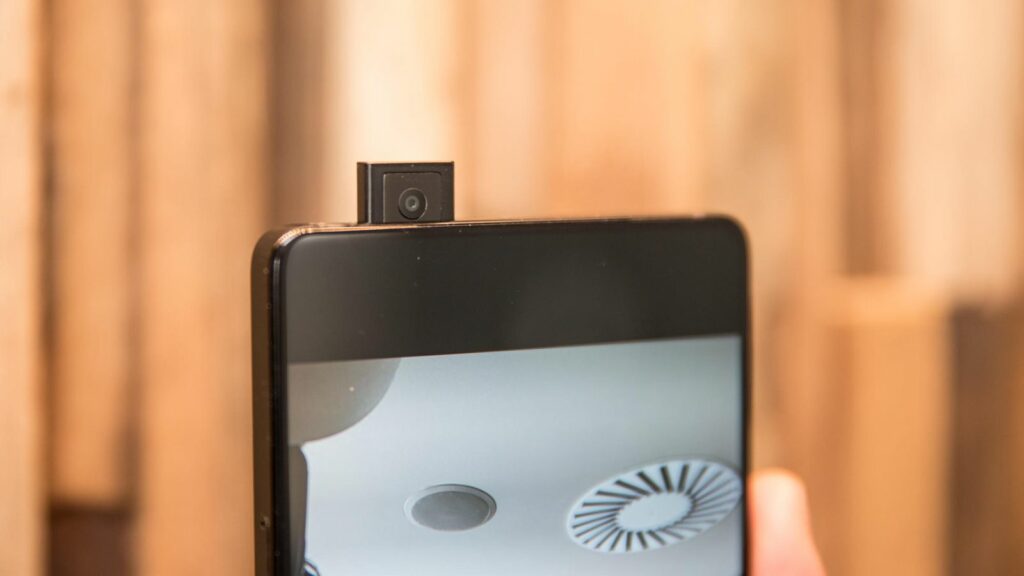The Most amazing Concept Phones From MWC 2018

MWC Barcelona is the biggest event in the mobile industry, which annually introduces and introduces new products for major companies active in the field. But the examples presented in this exhibition are not necessarily products that will release this year. This article examines some of the best conceptual designs of the Mobile World Congress in 2018.
Nubia for the gamers
Nubia is renowned for using premium materials in its attractive handsets. This year, the Chinese company has introduced a prototype model of its next smartphone specifically designed for heavy gaming.
For serious game enthusiasts, overheating of mobile devices (phones or tablets) has always been a major problem. Now Nubia claims to have solved this problem using four creative methods. The first is to use a fan structure inside the tool, which Nubia says uses a turbulence system to increase airflow inside the phone. The second feature is a nano-carbon inner casing that, in combination with a high heat dissipation of the body of the phone, provides a high thermal conductivity to maximize heat dissipation’s speed. Finally, the external part of the phone body is inspired by the aerodynamic design of sports cars with diamond cutting, which the manufacturer claims will increase the cooling efficiency.

This handset is still a conceptual prototype, so it’s still not possible to comment on the success rate of its design. The presence of red LED stripes on the back of the phone creates a unique look. According to Nubia, the phone will be available this year using the latest processor and possibly a large amount of RAM.
Ulefone T2 Pro
The MWC exhibition this year was full of products that imitated the design of the iPhone X. But despite the fact that the Zenfone 5 of Asus was the best example amongst this group, the Ulefone T2 Pro has undoubtedly attracted the attention of many visitors. A big part of this attention was because of large 7.6-inch display of this phone with a 19: 9 aspect ratio, while its margins were considerably thinner than iPhone X.

It seems that near edge-less designs have become more attractive this year, but its actual performance is not always successful, as the chance of a random touch of the display with different parts of the hand increases. Of course, considering that the handset presented at MWC was still a prototype, we could hope that the problem would be solved by integrating a palm rejection algorithm.
Vivo Apex
Vivo at CES this year has surprised many visitors with a fingerprint scanner under phone screen. Now in MWC, this company repeats the same experience with a new conceptual design that unfortunately is not supposed to be a real product to market.
The Vivo Apex is an interesting concept that, according to Vivo, shows the glance of the future direction of the handsets. It can be said that almost the entire front of the phone is dedicated to the display, with only a 1.8-mm bezel at top and sides of it. To make the bottom bezel as small as possible (4.3mm), the Vivo uses a flexible OLED display to wrap the bottom of the display behind itself inside the phone body. As such, the screen-to-body ratio of the Apex phone is 98%, which is a victory for Vivo.

As a step beyond the fingerprint scanner beneath the display in the X20 UD model, now instead of a specific point, you can use approximately one-third of the device’s display as the fingerprint scanner. That’s not all, and now you can activate the option to unlock the phone by registering two fingerprints. So, when unlocking the phone, you need to place both your fingers at the specified locations, or you can even unlock the phone with fingerprints of two different persons.

As a strange feature, Apex is equipped with a selfie camera, which pops up from the top of the phone as soon as you open camera app in Selfie mode. This kind of implementation of the Selfie camera may seem a bit strange, but when you assign the entire phone to the display, you have to resort to innovative methods for embedding the Selfie camera.

Finally, you can’t find any speakers on Apex. In contrast, Vivo has used “Screen Sound Casting” technology, in which the vibration turns the entire display into a speaker. Just bring your ear to the body of the phone to hear the sound of the other side with decent quality.


